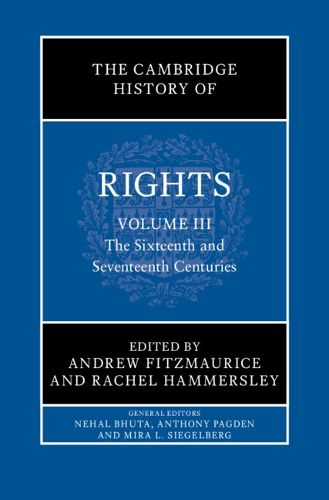Readings Newsletter
Become a Readings Member to make your shopping experience even easier.
Sign in or sign up for free!
You’re not far away from qualifying for FREE standard shipping within Australia
You’ve qualified for FREE standard shipping within Australia
The cart is loading…






In the sixteenth and seventeenth centuries, contemporary authors explored the myriad ways in which the concept of rights could be understood, but almost always arrived at the same conclusion: it was vital that rights should never be conflated with power. Through twenty-six expertly written essays, volume three of The Cambridge History of Rights focuses on the language of rights, exploring its use in contexts as diverse as the English family, trading relations and Asian powers. This was a period in which rights came to the forefront of political discourse, making it crucial to the longer history of rights reflected in this series. By foregrounding the idea of rights in action, the volume considers the relationship between the ways in which rights were articulated - by individuals, institutions and states - and how they were enacted in practice. In doing so, it uncovers the complexities inherent in the development of the language of rights during this formative period.
$9.00 standard shipping within Australia
FREE standard shipping within Australia for orders over $100.00
Express & International shipping calculated at checkout
In the sixteenth and seventeenth centuries, contemporary authors explored the myriad ways in which the concept of rights could be understood, but almost always arrived at the same conclusion: it was vital that rights should never be conflated with power. Through twenty-six expertly written essays, volume three of The Cambridge History of Rights focuses on the language of rights, exploring its use in contexts as diverse as the English family, trading relations and Asian powers. This was a period in which rights came to the forefront of political discourse, making it crucial to the longer history of rights reflected in this series. By foregrounding the idea of rights in action, the volume considers the relationship between the ways in which rights were articulated - by individuals, institutions and states - and how they were enacted in practice. In doing so, it uncovers the complexities inherent in the development of the language of rights during this formative period.